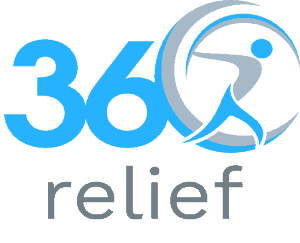
Make This Christmas Pain-Free: 10% Off on Supportive Wear!
Holidays are coming, which means that let’s welcome them with joy, laughter, and, of course, some comfort! At 360 Relief,

Table of Contents
ToggleAll the world’s best female tennis players are going to appear on the field to perform in the Women’s Tennis 2022 Billie Jean King Cup Finals. The host country for this women’s tennis cup finals is Scotland. The venue of this tournament is Emirates Arena – an indoor arena and velodrome in Dalmarnock, Glasgow, Scotland. This is the 59th edition of the Women’s Tennis Billie Jean King Cup. The first edition of this tournament was played in 1963. Every year the host country is different for this tournament. The United States has won 18 titles in the Women’s Tennis Billie Jean King Cup. The Women’s Tennis 2022 Billie Jean King Cup Finals are scheduled between November 8th and 13th, 2022. The following are the details of the tournament format and participating teams:
There is a total of 12 teams participating in the Women’s Tennis 2022 Billie Jean King Cup Finals and below is the sequence or grouping scheme of these participating teams:
| Group A | Group B | Group C | Group D |
| Switzerland | Australia | Spain | Czech Republic |
| Canada | Slovakia | Kazakhstan | USA |
| Italy | Belgium | Great Britain | Poland |
The tournament will be played according to the given decided or planned schedule:
| Dates | Rounds | Number of Teams |
| 8 – 11 November | Round robin | 12 (04 groups of 03 teams) |
| 12 November | Semi-finals | 04 |
| 13 November | Final | 02 |
We know all tennis lovers are so much excited about this tournament and can’t wait to watch their favourite players performing on the court. This also encourages tennis enthusiasts to organise or play tennis at their own places. While tennis is an exciting game, at the same time, it comes with some serious issues or injuries. Whether you are a professional player or participate as an amateur, injuries are possible at one point or another.
Here we are going to discuss common injuries found in tennis players along with the possible treatment plans for tennis injuries. However, the article is concluded with the best and most effective preventive measures, helping you get a safe or injury-free tennis experience.
Tennis is one of the non-contact sports but it may bring you some serious injuries to some extent. The main causes of injuries in tennis are overuse, falling, and repetitive actions you perform throughout your sessions. According to research or a study, the overall injury rate in tennis is 4.16 per 1000 athlete exposures. During this study, shoulder, foot, and trunk injuries were counted as the most prevalent. Approximately, 30% of all injuries were counted as inflammation-related conditions. However, 32.1% of all injuries were reported as time-loss and 45.0% as non-time-loss injuries.
In women’s tennis, the injury rate is approximately 05 injuries per 1000 athlete exposures; however, the injury rate is higher at 7.36 per 1000 athlete exposures during competitions and lower at 4.15 per 1000 athlete exposures during practice sessions. The following are the common injuries found in tennis players:
The rotator cuff is comprised of four tendons and muscles coming together to provide mobility and stability to our shoulder. Overusing the shoulder can gradually tear the rotator cuff; however, the tear in the rotator cuff may also be caused by an acute injury. Pain is a basic symptom of rotator cuff tear. However, depending on the severity of the injury, you may also feel tenderness, weakness, and difficulty lifting the arm. Sometimes, you may also feel cracking and snapping noises while moving your shoulder. Experts advise wearing adjustable shoulder support braces to avoid injuries or minimise pain after an injury.

Playing tennis can compress lumbar discs and may also serve hyperextends the lower back. This hyperextension can stress tendons, muscles, ligaments, lumber discs, and the small joints in the spine. Older tennis players are more prone to back pain or injuries because of progressive stiffness and degenerative diseases, such as arthritis. Back injury or pain usually results in a sudden, sharp, persistent, or dull pain in the lower back. The pain may worsen with activities and movements. In some severe conditions, the pain may also radiate to the hips, buttocks, or thighs. Increasing flexibility and wearing back support braces help reduce the chances of back pain during practice or match sessions.
Tennis elbow or lateral epicondylitis is an inflammation of the elbow tendons that help join the forearm muscles to the outside of our elbows. The condition results from overuse and is common among tennis players and others involved in racquet sports. Pain and tenderness outside the elbow are the common causes of tennis elbow. You may also experience pain in the back of your hands or forearm. Muscle conditioning and wearing elbow support braces help reduce the risk of tennis elbow during practice and competitions.

The patellar tendons attach the kneecap to the shinbone and assist the leg movements. As well as this, these tendons also support our body weight when walking or jumping. As tennis players involved in repetitive jumping and landing, they can put immense stress on their knees. Tennis knee usually results in pain and swelling. You may also feel warm to the touch in the affected areas. Healthcare advisors or professional trainers suggest wearing compression knee sleeves to protect the knees from stress during practice or play.

An ankle sprain is another common injury in tennis players due to the multidirectional nature of the sport. Frequent running and jumping during tennis may increase the risk of incorrect landing or turning your ankles. It’s been observed that clay courts put a tennis player at great risk of an ankle sprain. Pain, stiffness, and swelling are the common symptoms of ankle sprains. Ankle support braces are best in keeping ankle joints aligned, helping avoid injuries.

Mild to moderate conditions or symptoms may recover through conservative measures, including rest, ice massage, compression, and elevating the injured areas. Ensure that you follow the conservative measures under the guidance of your GP healthcare professionals.
Nonsurgical treatments of tennis injuries may include taking nonsteroidal anti-inflammatory drugs, physical therapy, and immobilising the injured areas. Medicines help reduce pain and inflammation; however, physical therapy helps regain your strength and range of motion. Moreover, immobilising the injured area helps avoid further damage.
Several conditions like tennis elbow, tennis knee, or ankle sprain, sometimes do not respond to conservative measures and nonsurgical procedures. For such conditions, healthcare professionals suggest surgical treatments to repair or replace the injured tendons. There are two types of surgical processes, i.e., open surgery or arthroscopic surgery used to repair the tendons.
Tennis professionals suggest some most effective preventive measures following which one can not only perform well but get an injury-free tennis experience. Below are the best practices that all tennis players, i.e., professional or amateur, must follow to keep themselves safe during practice or competition:
Proper warm-up before a practice session or competition increases muscle temperature and body functions, helping prevent injuries. However, practising again and again enables you to get a good grip on necessary playing techniques, helping you perform well.
Taking frequent breaks during your practice helps you avoid overuse injuries.
For a tennis player, it is always necessary to use the right or proper equipment or gear. Ensure that your racquet is perfect and you wear the proper kit, especially your footwear to avoid the chances of falling or other injuries.
Focus on your hitting or receiving techniques to prepare mentally and physically.
Staying hydrated helps you to regulate body temperature, keep joints lubricated, and keep organs functioning properly. Consequently, you can avoid injuries and perform well during practice and competition.

Holidays are coming, which means that let’s welcome them with joy, laughter, and, of course, some comfort! At 360 Relief,

Happy Cyber Monday to everyone; it is a perfect occasion for 360 Relief to offer a special discount of 10%

This Black Friday, take advantage of exclusive 10% savings on some of 360 Relief’s best-selling compression socks and support braces!

Everyday life includes walking up stairs, but knee discomfort can make this basic activity difficult. Walking up or down stairs

Cooking is a beloved activity for many, but for those struggling with knee pain, standing in the kitchen can quickly

We’ve all been there. On a ride in a car, for instance, to the country home for a weekend break

Gardening is enjoyable for many people and those who like tending to their lawns and plants usually find it therapeutic

Do you have a painful knee problem that takes you to physiotherapy…for an injury that hampers your daily living…your workout

Training can be very much associated with some pains and injuries that may be experienced by the trainers. As there

Office workers often spend hours seated at their desks, focusing on tasks while unknowingly putting their health at risk. The

Winter often brings more than just a change in weather; for many, it also means dealing with unexpected swelling in

Compression socks have become a critical tool for athletes across all sports. Whether you’re a marathon runner, cyclist, or weightlifter,

October marks the beginning of National Cholesterol Month in the UK, a time dedicated to raising awareness about cholesterol and

Overall, there is nothing to match the experience of watching musicians perform live in an outdoor concert in Glastonbury. However,

Today charity runs have gained popularity as a way of raising cash for a cause in the United Kingdom. From
Please enter your email to subscribe to our newsletter for exclusive offers and updates
Copyright © 2025 | 360 Relief Ltd | Sitemap

